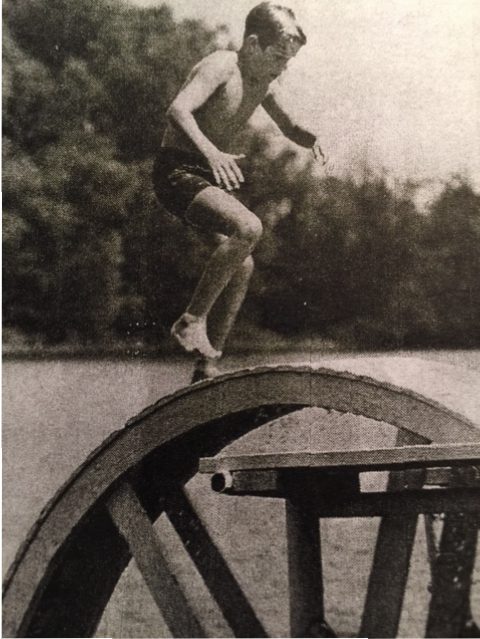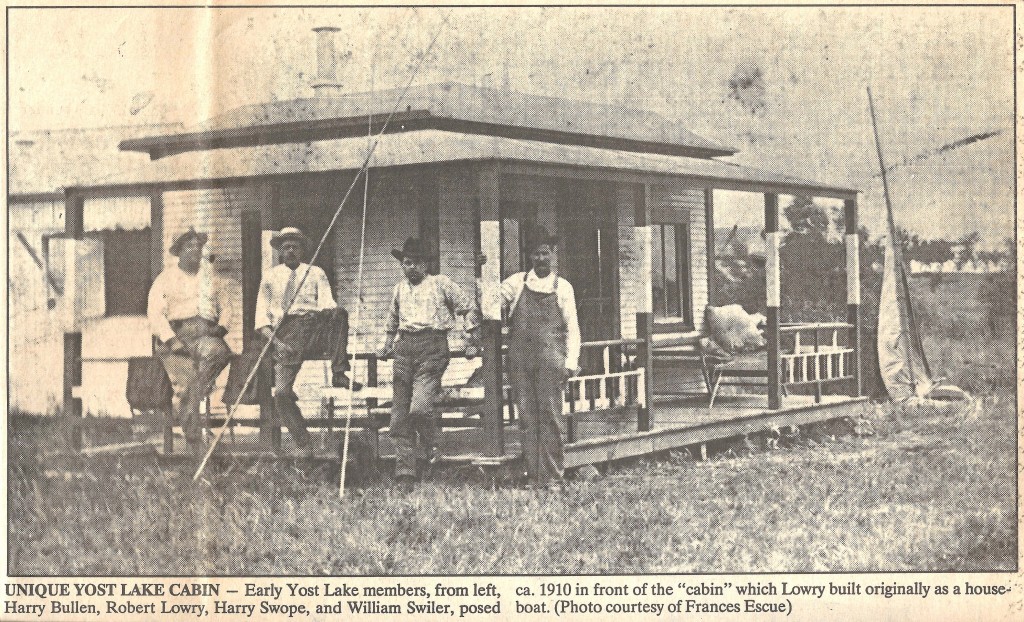
In Oklahoma’s early days, few towns enjoyed the pleasures of a nearby waterhole or recreational spa, at which to wash off and cool down in those hot, dusty, pre-electric, pre-air conditioned days and nights. When they did have such proximity to water, they certainly tried to make the most of it.
This was the case with folks in Stillwater, when very early in the 20th century (about 1902 or ’03) the Santa Fe Railroad completed its branch line loop out of Guthrie serving Ripley, Cushing, Stillwater, Glencoe, Pawnee, and intermediate points.
The all-important feature of this branch was the lake of some 25 acres, more of less, seven miles northeast of Stillwater, built to supply boiler water for trains operating on the line. I understand the lake got it’s name from the landowner, Mr. Yost. But this did not concern us kids, the important thing was the water, muddy or not.
Organization of Yost Lake Country Club quickly followed the lake’s construction and my father – C.A. Melton, who had arrived in Stillwater in 1900 – quickly joined and served as secretary-treasurer of the club for many of those early years. I can recall buggy rides to Yost and back well before the general use of automobiles, which became common with advent of the Model T about 1908 or ’09. It was a private club organized primarily for members and their families, but public pressure quickly caused it to be opened to the public, at a small charge (not over a quarter). Most people in town were able to enjoy the facility if they had some way to get out there and back.
Yost Lake quickly became a Mecca for youngsters from Glencoe, Pawnee, and other places within driving radius, and its significance in the lives of children in Stillwater and Payne County in those days can hardly be overestimated. This also included many generations of college students from about 1904 on, as well as groups of trainees at the college during World War II, who enjoyed picnics there during short “crash” training programs at the college. Getting there and back was often a problem. One way was to ride the train, which left Stillwater around noon and returned later that night. I don’t remember the fare, but ~ was a factor for us kids.
Bicycles were the usual mode of transportation for many, and even walking the railroad tracks out and back was not uncommon. Later, the Model T served one of its felicitous functions in hauling high school and college boys and girls to Yost and back. I recall one time, when about 7 or 8 years old, of being awakened during the night by my Dad, asking if I needed to go to the bathroom, and I sleepily responded, “Wait ’til we come to a bridge,” which he found very amusing. I had been dreaming I was walking the railroad tracks to Yost Lake.

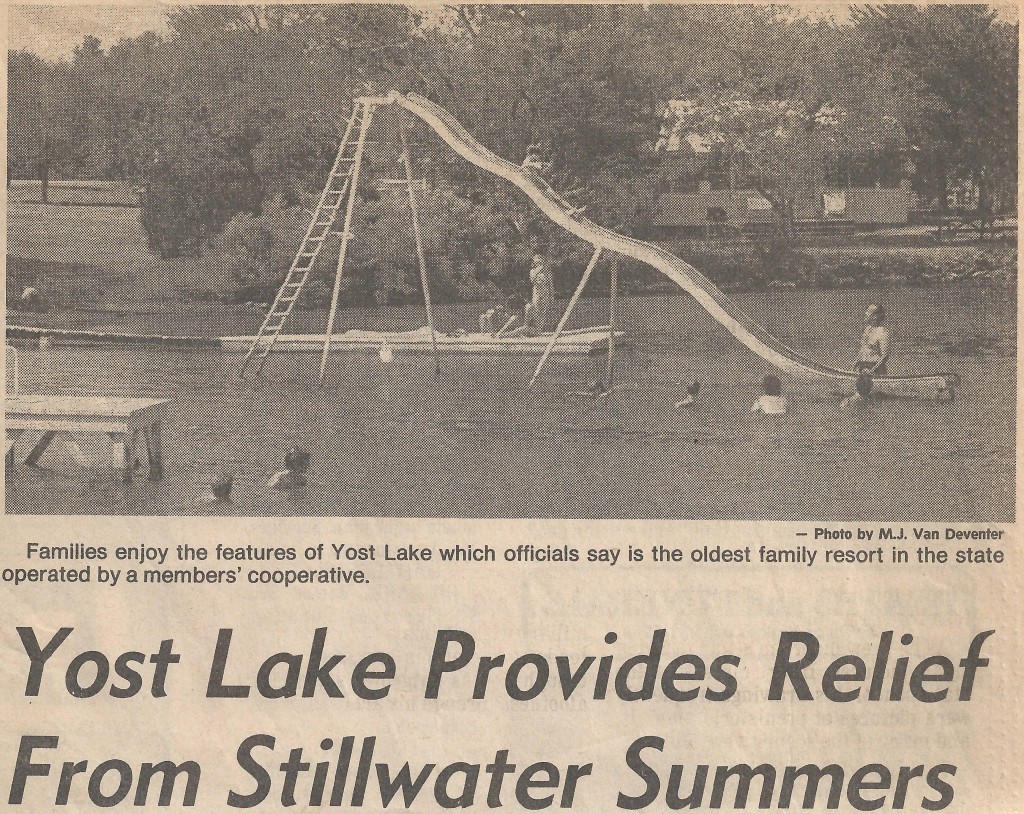
There was a period during my high school days when I took up fishing and would ride the train out at mid-day, fish most of the afternoon and evening, then have supper with the family when they drove out to the cabin to enjoy supper in the cool of the evening. I supplied some of the food, too, from time to time, for I became a pretty good fly fisherman and caught some nice crappie and bass.
No reference to the railroad’s connection to Yost Lake would be complete without mention of the popular, well-known conductor, Tom Fogarty, who, with his family, lived in Guthrie. Fogarty was probably the most accommodating train conductor in the nation, as he would stop the train to let off or take on farmers and others wanting transportation wherever encountered. He would also bring his family to Yost on vacation each summer. I became acquainted with his boys during those vacations, and later renewed acquaintance with Dick Fogarty when he came to the Legislature representing Logan County in the 1950s or ’60s.
We are ready to meet your needs and help you move forward with your construction project.
Call or email today!
The pumping station at the southwest corner of the dam and close to the gate was manned, at the time my memory began, by Pat Albert, an Irishman not long out of the Olde Country, whose job was to keep the water tank filled from the lake to serve trains as needed. Pat later became custodian for the club during the teens and early 1920s. He ran a “taut ship,” as it were, and would brook little nonsense from toughs or college boys who got out of line.
Arrival of the train at Yost was a major experience in the lives of us youngsters. This was where we learned most about trains. We could hear the whistle and with ear to the rail could detect the distant rumble long before the train appeared around the curve from the north; and as that iron monster bore down upon us, panting, wheezing and breathing up to the water tank, mashing the pennies we had laid on the rails, we tremendously impress, indeed, by what “man had wrought.” It left a memory on our impressionable minds that is still there.
Bicycles were the usual mode of transportation for many, and even walking the railroad tracks out and back was not uncommon. Later, the Model T served one of its felicitous functions in hauling high school and college boys and girls to Yost and back. I recall one time, when about 7 or 8 years old, of being awakened during the night by my Dad, asking if I needed to go to the bathroom, and I sleepily responded, “Wait ’til we come to a bridge,” which he found very amusing. I had been dreaming I was walking the railroad tracks to Yost Lake.
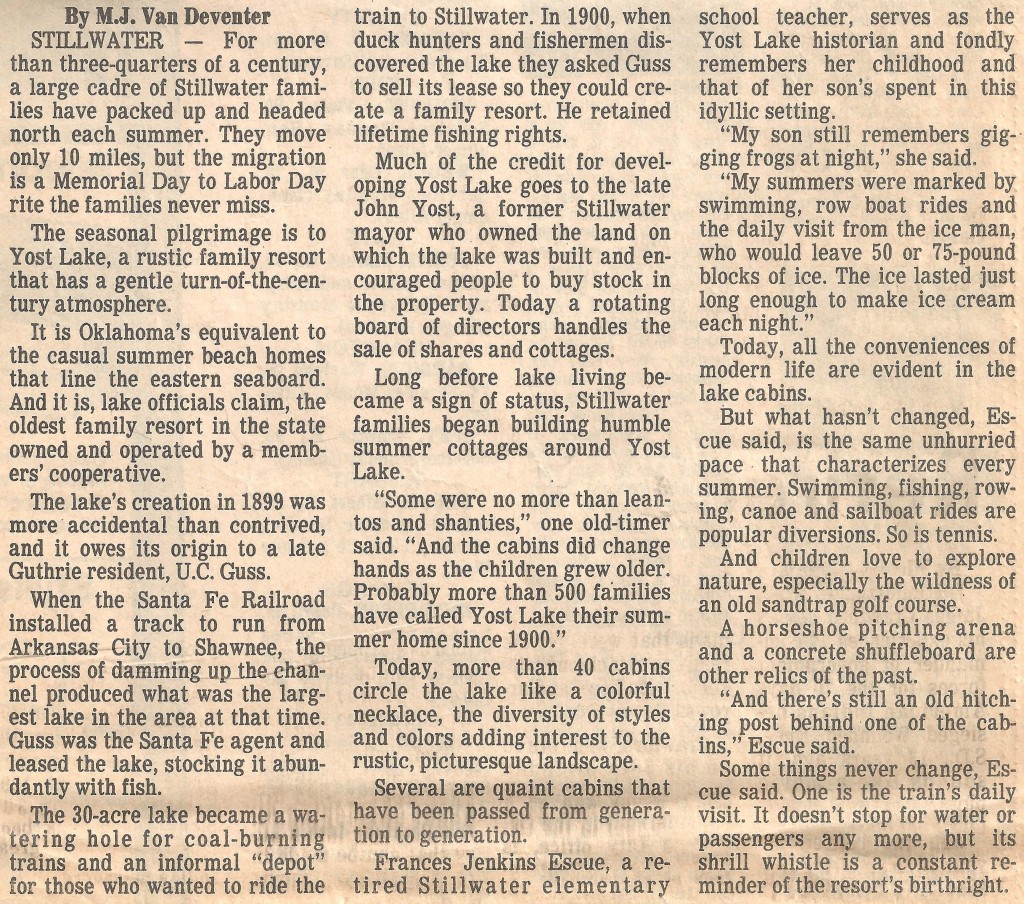
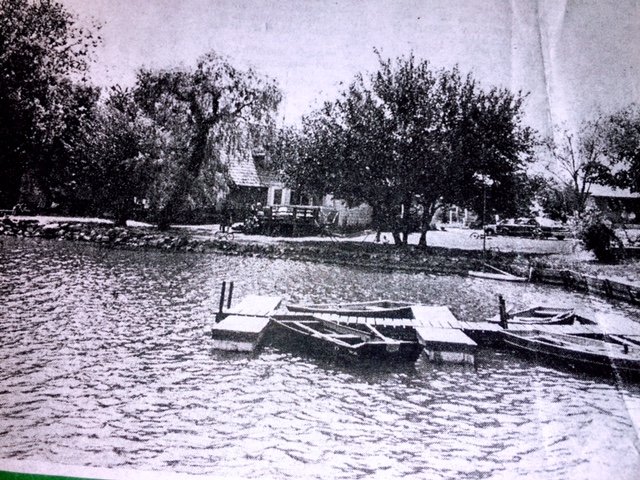
In the early days cottages were relatively few and clustered mainly between the gate and the pavilion along the west bank. C.A. Melton, my father, once told me that his cottage, which he had bought from someone else, was the first one on the lake. Another early cabin was Bob Lowry’s houseboat, the “Hunky Dory,” which after being overturned in a violent storm was hauled ashore and converted into a cottage, the better to play poker without disturbance from windstorms. Most cottages were small, originally, but enlarged from time to time to suit family needs, and were lighted with coal oil larnps (kerosene supplied by the “oil boys,” the Lovell brothers). My father’s cabin was second from the pavilion, with a point of land out in front which C.A. subsequently had filled in and rocked up around the waterfront. Steps led down to the water. A screened porch extended some 18 or 20 feet across the lakeside, where picnic suppers were enjoyed by generations of family, college students, Pi Eta Alpha girls, Methodist choir members, and friends galore.
The storm that overturned Lowry’s “Hunky Dory” happened one night about 1905. C.A. and my older brother, Armon, then age 9, were spending the night at the lake and were awakened by cries of “Helpl Helpl” from across the lake. They put out in a rowboat in the direction of the shouts, and picked up the “survivors.”
No reference to the railroad’s connection to Yost Lake would be complete without mention of the popular, well-known conductor, Tom Fogarty, who, with his family, lived in Guthrie. Fogarty was probably the most accommodating train conductor in the nation, as he would stop the train to let off or take on farmers and others wanting transportation wherever encountered. He would also bring his family to Yost on vacation each summer. I became acquainted with his boys during those vacations, and later renewed acquaintance with Dick Fogarty when he came to the Legislature representing Logan County in the 1950s or ’60s.
We are ready to meet your needs and help you move forward with your construction project.
Call or email today!
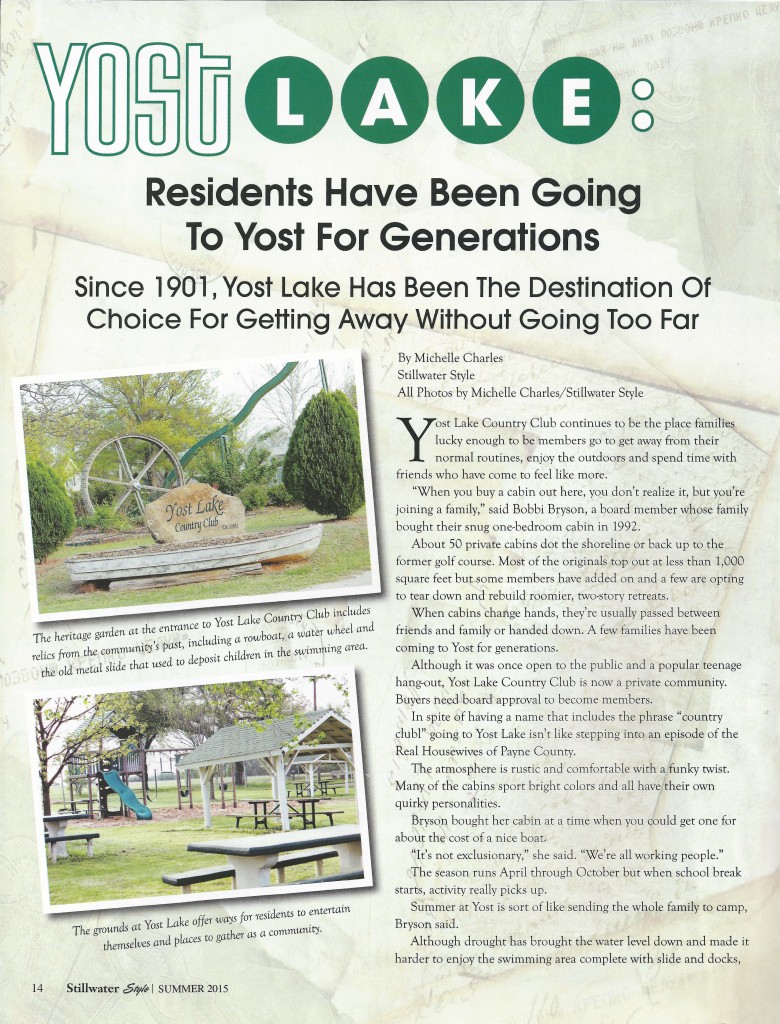


More than a few youngsters have learned how to row a boat or paddle a canoe at Yost lake. And more than a few adults have enjoyed a quiet fishing trip on the small lake east of Stillwater. Above, a view of the lazy boat dock, beyond it some of the cabins that a number of Stillwater families call home for the summer.
Graceful dives were part of the experience on the diving platform, but so were plain old fashioned cannon-balls and double-gainers. Strict rules about horseplay on the platform were enforced by youthful life guards who kept a watchful eye on the youngsters playing in the water. Slipping down the slide could end in a feeling of sheer freedom.
A youngster polishes up his skill at the old paddle-wheel in the swimming area at Yost.
Here on the shores of the big pond children could splash and slide into a swimming hole. Nearby a pavilion, boat dock, horseshoe pit, picnic park, tennis courts, playground and more offer facilities for leisure time that seems to stretch summer hours far past city hours.
The cabins were quaint cottages with ruffled curtains, some were fully equipped homes.
Mornings started gently here, with late-sleeping children and coffee-klatching mothers. Lunches were often community events.
There was and is a camaraderie here that knit friends together through many seasons. The seasons of life were shared as well.
The countdown is on. It is only a few weeks till the season begins again at Yost Lake.
